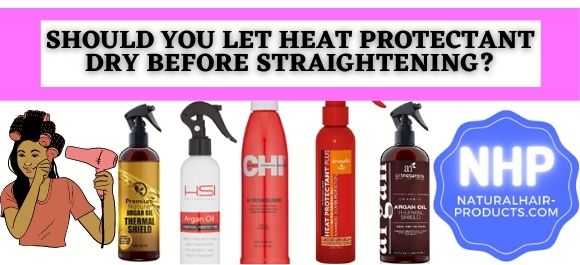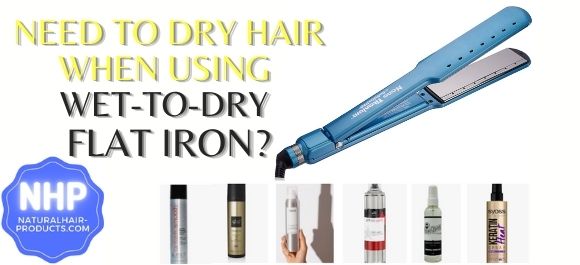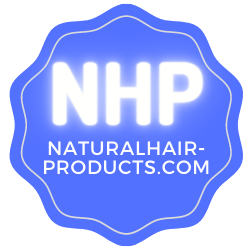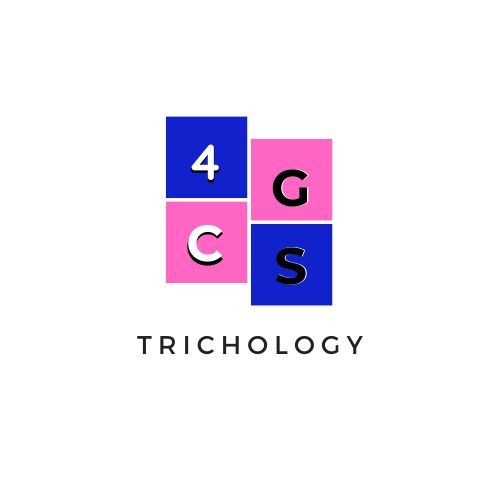Do You Let Heat Protectant Dry Before Straightening? [Best Answer]
Do you let heat protectant dry before straightening? Should you? Quick answer is... Yes, let your protectant fully dry first. You should NEVER heat straighten your hair with ANY kind of wetness on hair, whether a premium heat protectant or water.
When hair remains wet, high temperature from a powerful Professional flat iron heats and boils liquid which is on and in your hair follicles. That boiling and steaming is terrible for your hair health because it damages the cuticle.
Have you ever heard that terrifying sizzling sound as you flat iron your hair?
Looooord hammercy…
That’s about the time that you put the Babyliss straightener (or whatever brand you prefer) down and start praying you don’t have burnt hair strands lying on the floor.
Why Your Hair Sizzles When Flat Ironing on Wet Heat Protectant?
Hair can sizzle for several reasons when feeding it through a straightening iron. If you hear that sizzling (snap, crackle, pop) sound it’s an indication that you’re doing something wrong during the straightening process.
Do you let heat protectant dry before straightening? If so, you probably have never suffered “the popcorn effect”. And props to you!
You see:
The sizzling sound people hear when applying the flat iron or curler to their hair can be caused by a couple of things, both are preventable when you let your hair fully dry before straightening.
That sizzling sound can be caused by either the hair still being wet from the wash or it's because there is moisture left by the heat protector. Let’s talk about this in detail:
- The first cause of the sizzle is your hair is not completely dry after applying your shampoo and moisturizing conditioner. Letting your hair air-dry is the ideal way dry before the straightening process. The sizzling comes from a hot flat iron coming into contact with the water still trapped in hair if it’s still wet or damp. If you hear this, it’s best to set the flat iron aside and let your hair fully dry before straightening.
- The second reason a flat iron or curling iron could cause sizzling is because of your application method of the heat protectant. Do you let heat protectant dry before curling or flat ironing? Many people who use heat protectant for the first time don’t realize they should let it fully dry after applying it. The heat protectant is still damp when it’s freshly applied to the hair and when it’s not dry a professional flat iron will cause a sizzle when it comes into contact. Which is actually an explosive evaporation of moisture inside wet hair under high heat.
So, do you let heat protectant dry before straightening with your flat iron? You should be doing so.
Your tresses should be completely dry from wash water and the heat protectant should be completely dry as well before the flat iron straightening process begins. Completely one hundred percent dry. Otherwise, the following can happen.
You’ve been warned! If there is ANY moisture on the hair shaft from the protectant spray, serum or cream, it turns into steam the moment the straightener touches the hair which can totally jack up a good silk press ironing session.
The steam literally blasts through the structure of the hair and this happens at the medulla or inner layer part of the hair.
Studies have proven that thermal treatments with a curling iron on wet hair resulted in severe damage, as well as bubbling and buckling of the cuticle due to the formation and escaping of steam from the hair fiber.
This also applies to flat irons ofcourse, even the best models like Babyliss Pro, GHD ceramic straighteners and Bio Ionic 10X flat irons.
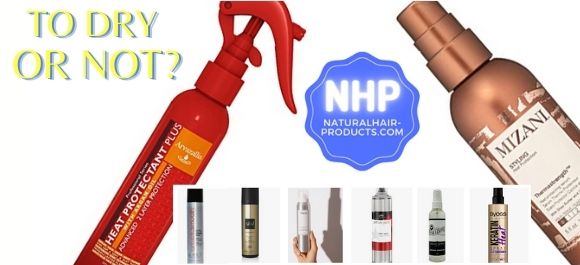 Do You Let Heat Protectant Dry Before Straightening...
Do You Let Heat Protectant Dry Before Straightening...Wet-to-Dry Flat Irons - Still Need To Let Heat Protectant Dry Before Straightening?
So, for my inquisitive readers who want to take the question a step further and ask… “Do you let heat protectant dry before straightening WITH A WET-to-DRY FLAT IRON?”
The answer is still, yes! Although it can have some level of dampness when using a heat tool like the BaBylissPRO Nano Titanium-Plated Wet-to-Dry Straightening iron.
Despite their name, wet-to-straight flat irons shouldn't be used on completely wet hair—only slightly damp hair. Styling wet hair can result in a frizzy or wavy look, damaged hair, and much longer straightening session.
Even with the best wet-to-dry straightener you need to use heat protectant and let it dry to atleast dampness before straightening. 100% of the time.
Your hair is most fragile and susceptible to damage when it’s wet. Flat ironing completely wet hair can lead to “bubble hair” even with the best-of-the-best wet-to-dry flat iron.
To reduce the amount of heat, consider letting your hair air dry instead of blow-drying it before flat ironing. Also, check out my article about the best flat iron temperature for a silk press.
If you’re too busy to air-dry or prefer blow drying your hair, make sure to thoroughly towel-dry it after washing using a highly absorbent microfiber towel.
Your best bet is to use an ionic hair dryer to help lock in moisture, reduce drying time, and tame frizz. Blow-dry in a downward motion to make hair as straight as possible before starting the flat iron straightening.
Wet & dry flat irons are designed to give you an option for styling damp hair, not fully wet hair. The flat iron plates have holes or steam vents that remove water from your hair.
An additional benefit is that drying and styling your tresses all at once can be less time-consuming than with traditional flat irons.
Can You Use Heat Protectant Spray On Dry Hair?
The answer is, yes. You certainly can use heat protectant spray on dry hair, whether it’s the best option for your hair is a different subject that I’ll touch on in a minute.
Yes, there are even specially formulated dry hair protectants for exactly this purpose. You can use these heat protectants on your 1st, 2nd or 3 post-wash day hair. This gives you the ability to curl or straighten your hair whenever you want to.
Some also ask, “How to use heat protection spray before straightening?” and, “How much heat protection spray should I use?”...
Let me answer both here: You should split your hair into 3 or 4 layers. Three layers if your hair is fairly thin, four layers if your hair is thicker or more coarse than normal. For thin hair, your limit for each layer should be a little bit bigger than the size of a pea.
If you spray heat protectant, don’t use more than four sprays per layer. For thick hair, your limit should be the size of a nickel per layer, or 5-6 sprays per layer. If you feel that your hair doesn’t look or feel damp (spray) or greasy (serum) when you’ve finished preparing to flat iron then you are ready to begin the styling process.
If their hair feels quite damp, do not begin to straighten until you let the heat protectant soak into the roots and completely dry.
Should You Use Heat Protectant Spray On Dry Hair?
So, I made it clear that YOU CAN use heat protectant spray on dry hair. That doesn’t mean you should, or that it’s best.
Even though you can use protectant spray on 3 day-old unwashed hair, it is better to wash your hair and apply a good premium hydrating conditioner on it before using heat tools for styling. Reason being, a quality conditioner will aid in the protection of your luscious locks.
After washing and conditioning your hair and applying your protectant product, let your heat protectant dry before straightening.
If you use a different heat protector for your roots, apply this before you apply the spray to the rest of your hair.
And, let me address this quickly, some ask “Should I apply heat protectant before or after styling products?”
The answer is… Always apply heat protectant BEFORE applying styling products. Adding it afterward doesn’t make sense. Ok, enough on that.
Conclusion: Do You Let Heat Protectant Dry Before Straightening
I hope I have convinced you to let heat protectant dry before straightening because there is good scientific reasoning behind this.
As mentioned above, every single hair strand is made up of 3 parts - the innermost medulla, the middle layer cortex, and the protective, outermost layer called the cuticle. Wet hair can absorb up to 30% of its own weight in moisture.
Applying a heated flat iron to wet hair means that the absorbed water inside your hair turns into gas. It expands and needs to get out. So it bursts out explosively from the inner part of your hair, shattering your hair’s structural bonds.
Think of it as similar to popping popcorn kernels. This happens to hair right up against the heated ceramic tourmaline plates of your flat iron. Over time, damaged hair increases, and you end up with brittle, dry, unhealthy hair which will scream for a big chop.
And, even though flat irons these days are often very good quality and feature state-of-the-art advancements (check out Babyliss flat irons with their Nano-titanium technology picked as the best flat iron for natural hair by many publications), they don’t prevent damage to your hair if used incorrectly.
Do you let heat protectant dry before straightening? After reading this article, you better be! Flat iron straightening will only do more damage if you don't let your thermal heat spray fully dry.
Follow Editor of "Do You Let Heat Protectant Dry Before Straightening?" Tutorial...
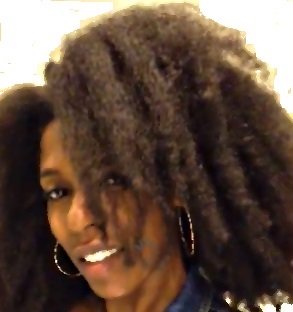
ABOUT THE AUTHOR: Melissa Lee
Melissa Lee is a Contributing Editor to NHP and a former owner of the BlackhairOMG website. She formed 4C Trichology Growth Services, LLC., a US based hair care consultation service. She has also contributed as a writer and consultant for various hair and beauty websites. Melissa can be followed on Twitter here.
- NHP
- Flat Iron Guide
- Babyliss Flat Iron
- Do You Let Heat Protectant Dry Before Straightening
